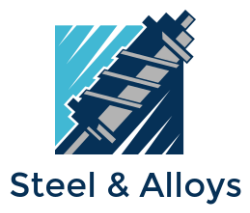Free Cutting Steels
Free cutting steels are a category of steels specifically designed to improve machinability, making them ideal for various machining processes such as drilling, turning, and milling. They contain additional elements that form small, finely dispersed particles in the steel, which aid in chip breaking and reducing tool wear during machining operations. Here, we'll explore some popular free cutting steel grades, their available shapes, sections, and forms, as well as their production routes and machinable conditions.
**Popular Free Cutting Steel Grades:**
1. **EN-1A:** This low carbon-manganese steel is one of the most widely used free cutting steels. It is known for its excellent machinability, good weldability, and moderate strength.
2. **EN1A-L:** A leaded version of EN-1A, the addition of lead enhances machinability and improves surface finish.
3. **EN-8M:** This medium carbon free cutting steel offers better strength and wear resistance compared to EN-1A, making it suitable for more demanding machining applications.
4. **EN-15AM:** With increased levels of sulfur and manganese, EN-15AM provides superior machinability and can be used for intricate machining processes.
5. **AISI 1214 / 12L14:** This American Iron and Steel Institute (AISI) grade contains higher lead content, making it exceptionally easy to machine.
6. **AISI 1215 / 12L15:** Similar to AISI 1214, this grade also contains lead but with the addition of tellurium, further improving machinability.
**Shapes, Sections & Forms:**
Free cutting steels are available in various shapes and sections to cater to diverse industrial needs. The common shapes include rounds, squares, rectangular cross-sections (RCS), flats, hexagons, and wire.
**Size Range for Each Section:**
The size range for each section can vary depending on the steel grade and the manufacturer. However, typical size ranges are as follows:
- **Rounds:** Diameter ranging from 5mm to 150mm.
- **Squares:** Side lengths ranging from 5mm to 100mm.
- **RCS:** Widths ranging from 20mm to 100mm, and thicknesses from 5mm to 50mm.
- **Flats:** Widths ranging from 20mm to 200mm, and thicknesses from 3mm to 50mm.
- **Hexagons:** Across flats ranging from 6mm to 75mm.
- **Wire:** Diameter ranging from 0.5mm to 25mm.
**Production Routes:**
Free cutting steels are produced using different production routes based on the required quality and application:
1. **Non-Vacuum Degassed (Non-VD) Route:** This conventional production route involves the use of non-vacuum induction furnaces. While it is cost-effective, it may result in slightly higher levels of impurities.
2. **Vacuum Degassed Route:** In this process, steels are produced using vacuum induction furnaces, leading to higher purity and improved mechanical properties.
**Machinable Conditions:**
Free cutting steels are offered in various machinable conditions, depending on their intended use and the desired properties:
1. **As Rolled:** The steel is delivered as it comes off the rolling mill, with no further heat treatment.
2. **Annealed:** The steel is heated and slowly cooled to relieve internal stresses and improve workability.
3. **Normalized:** The steel is heated above the critical temperature and then air-cooled to enhance its mechanical properties.
4. **Spheroidize Annealed:** This heat treatment improves machinability and formability by producing a spheroidal microstructure.
5. **Cold Heading Quality (CHQ):** Specifically designed for cold heading processes where the steel is formed into fasteners or other components.
**Conclusion:**
Free cutting steels are a valuable addition to the world of engineering and manufacturing. Their excellent machinability, wide range of available sections, and different production routes make them suitable for various applications across industries. When choosing the right grade and section, consider the specific requirements of your project to maximize efficiency and performance during machining processes.
